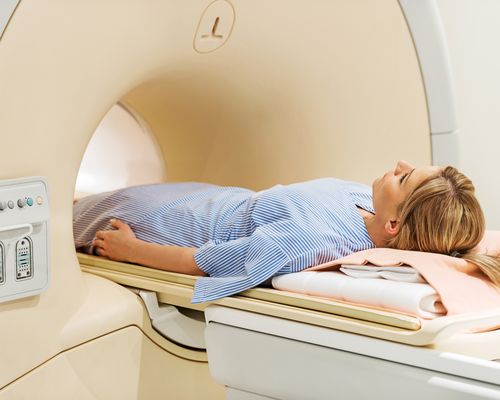Towards MRI-guided personalised radiation therapy
MOST of us have been or will be touched by cancer at some stage in our lives, with an estimated 150 000 new cases of cancer expected to be diagnosed in Australia in 2020 alone.
While we have made promising progress in many cancers, such as leukaemia and non-Hodgkin lymphoma, which have seen survival rates increase by 20-30% in the past 30 years, the battle is not yet won. Survival rates for lung cancers have only increased 6% in the past 30 years, and for devastating pancreas and high grade brain cancers, we have not seen an improvement at all (here and here).
And while prostate cancer, the most commonly diagnosed cancer in Australian men, has one of the most positive increases in survival rates, the challenge lies in improving survival while minimising patient side effects. Personalised treatment that assesses individual patient risks against curative outcomes can help improve patient quality of life.
Radiotherapy plays an important role in the oncology treatment paradigm and is indicated for approximately 50% of all patients with cancer for curative treatment and pain and symptom management.
However, rapidly evolving radiotherapy technology is arming clinicians with the tools to effectively personalise and adapt radiotherapy cancer treatment like never before.
MRI meets linear accelerator
In particular, advances in magnetic resonance imaging (MRI) have led to significant improvements in image quality and tissue, physiology and metabolism visualisation capability, which can better inform clinical decision making and precision treatment.
The linear accelerator – a device that accelerates electrons to near speed of light energies and creates therapeutic x-rays for cancer treatment – has been the workhorse of radiotherapy since the 1950s .
One of the most exciting innovations to emerge in cancer treatment in recent years is the pairing of MRI technology with the linear accelerator (linac).
The role of magnetic resonance is growing in radiation treatment. Diagnosis, simulation, treatment planning, treatment delivery, online adaption and treatment assessment, as well as response assessment can all be done with an MRI Linac system.
Adaptive visualisation
Clear visualisation of tumours and surrounding tissue through live monitoring, and adaptation in real time to daily changes in tumour size, shape and location, all mean treatment can be delivered more accurately than ever before. This allows previously difficult areas to treat, such as upper gastrointestinal tumours, to be more accurately targeted while avoiding dose to healthy tissue and normal organs. All this can be done without the need for any invasive procedure, such as the insertion of fiducials or markers.
With standard linear accelerators, the radiotherapy plan is based on a computed tomography scan done days to weeks before treatment, and tumours can change or move in that time. Evidence has shown that movement of organs during a course of radiotherapy can lead to tumors being missed or healthy organs receiving extra radiation.
To ensure tumours are not missed, it’s necessary to treat large areas surrounding the cancer, or do invasive procedures to insert markers that can be tracked. Extra scans are then done during treatment, exposing patients to more radiation, yet are of inferior quality to MRI images.
These concerns are addressed with the MRI Linac due to its ability to undertake high quality MRI scans prior to each treatment so that treatment is adapted to the actual anatomy of the patient at the time the beam is turned on, all without exposing the patient to any further radiation. Thus, MRI Linac enables treatment to be personalised to that individual at that particular moment.
Higher doses of radiation can thus be delivered safely to previously hard-to-treat cancers with improved cancer and toxicity outcomes, such as have been shown in pancreas cancers.
One area where this technology is showing promise is in the treatment of prostate cancer. Today, patients with prostate cancer have a wide variety of curative treatment options, including radiotherapy, surgery, focal therapy and brachytherapy. The ability to further tailor and target treatment, thereby minimising the dose to healthy organs surrounding the prostate, may help improve rates of cure and reduce side effects.
Quicker curative outcomes
Especially pertinent in the coronaviruse disease 2019 (COVID-19) climate, MRI Linac offers a non-surgical alternative, with reduced treatment frequency, both of which minimise the time a patient is required in the hospital or clinic. The clinical objective of the MRI Linac machine, the first of which in New South Wales was installed at St Vincent’s Darlinghurst recently, is to improve patient experience and operational efficiency by stereotactic and hypofractionated treatment.
Stereotactic and hypofractionation mean fewer treatments of higher doses of radiation therapy, which can greatly improve the quality of life of people with cancer and their carers through fewer clinic visits, less travelling for appointments, and more time at home.
These techniques are currently used most commonly for prostate cancer, oligometastases and breast cancer. MRI Linac expands what can already be done in the treatment of prostate cancer, but also opens up new pathways for patients with previously untreatable cancers.
The future is personalised
As it is a first of its kind system, the teams who work with the Elekta Unity MRI Linac are part of a worldwide consortium of clinicians who are gathering data on its performance and capability. These data will form part of a global reference group that will inform the treatment protocols of the future. The consortium is focused on improving current treatment techniques and exploring new horizons, such as imaging biomarkers and radiotherapy for cardiac pathologies.



